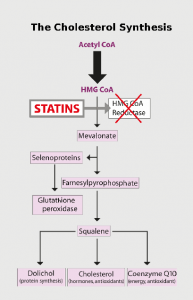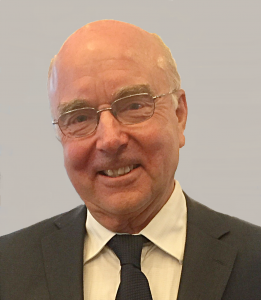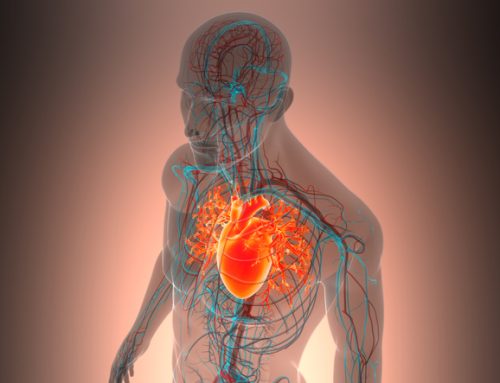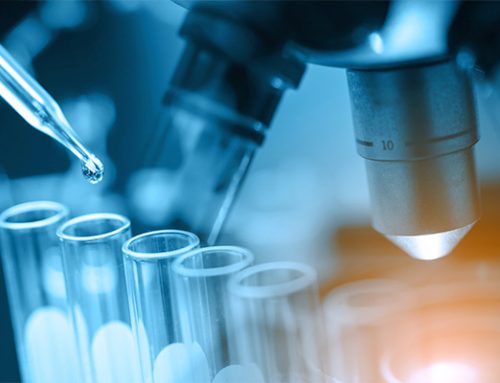Supplementation with Coenzyme Q10 and selenium over a 4-year period can halve cardiovascular mortality. In March 2023, Professor Urban Alehagen and colleagues published a 10-year follow-up to the original KiSel-10 study from 2013. The 2023 article brought up to date a published article from 2015 that showed pronounced cardiovascular protection associated with supplementation with Coenzyme Q10 in combination with selenium [Alehagen 2013; Opstad 2023; Alehagen 2015].

Guest author this week is the retired medical doctor Dr. Claus Hancke, who has followed closely the results of the KiSel-10 Study of the effects of CoQ10 and selenium supplementation on heart health in elderly individuals. Here, Dr. Hancke shows that the use of statin medications to inhibit the synthesis of cholesterol also inhibits the cells’ synthesis of Coenzyme Q10.
Thus, Professor Alehagen and his colleagues have continued their investigations of the actual causes of this positive effect, the halving of cardiovascular mortality after 4 years of supplementation. Their findings are in complete harmony with our knowledge of the cause of atherosclerosis, which is a combination of inflammation and oxidation. Without these two factors, atherosclerosis does not occur.
Foam Cells and Fatty Streaks
Oxidized LDL cholesterol is taken up by monocytes via scavenger receptors in the cell membranes [Giacconi 2021]. This means that LDL cholesterol is directed around the usual LDL receptors, which could otherwise easily block intake. But the scavenger receptors cannot stop their intake of LDL cholesterol if the LDL cholesterol is oxidized because LDL in this form acts as a free radical. And free radicals are exactly what the scavenger receptors are designed to let into the monocytes. Since the intake cannot be stopped even if the monocytes are full, the monocytes swell and are seen under the microscope as foam cells.
It is oxidation that causes monocytes to become foam cells. When the monocytes circulate in the bloodstream, they react when they find an area in the blood vessel walls where there is inflammation. The monocytes search out the inflamed areas and migrate into the subendothelial layers of the blood vessel walls, where they perish and leave behind fatty streaks of oxidized LDL cholesterol [Giacconi 2021]. This activity increases inflammation and attracts even more foam cells. The foam cells, in turn die, leaving behind more of the oxidized LDL, which is gradually consolidated by fibrin and finally stabilized by calcium. These are the final steps in the process of atherosclerosis.
Increased Inflammation and Oxidative Stress
The entire process described above will not take place unless there is both increased inflammation and oxidation of LDL cholesterol. And precisely Coenzyme Q10 and selenium inhibit the development of both inflammation and oxidation. Therefore, it is not so strange that the two supplements prevent cardiovascular disease and reduce the risk of dying from it.
Coenzyme Q10

Dr. Claus Hancke – Danish medical doctor, author, educator, and mentor – is a guest author on q10facts.com. Dr. Hancke is a Fellow of the American College for Advancement in Medicine. In his own clinic, he has worked with alternative forms of treatment and with integrative medicine.
The body’s cells produce energy in order to function. The generation of this energy requires CoQ10 molecules in the mitochondria in the cells. Unfortunately, there is a natural decline in the body’s production of Coenzyme Q10 as we age. It is therefore natural to supplement with Coenzyme Q10.
The cells produce Coenzyme Q10 in almost the same way as they produce cholesterol and dolichol. Statin medications interrupt this common synthesis pathway, thereby inhibiting the synthesis of Coenzyme Q10 as well as inhibiting the synthesis of cholesterol. The inhibition of the synthesis of Coenzyme Q10 is, thus, an unintended consequence of taking a statin medication. For this reason, many statin patients have an inadequate supply of Coenzyme Q10 and need supplementation [Okuyama 2015].
Selenium
Selenium is a substance that we absolutely must not be deficient in. Numerous studies have confirmed over the years that selenium deficiency can lead to, among other things, systemic atherosclerosis, heart failure, cancer, metabolic disorders, arthritis, infertility, increased inflammation and a number of immunological failures, which were particularly relevant in the corona virus period.
There are large numbers of journal articles that document biochemical and clinical research into selenium, e.g., a study of selenium deficiency related to cardiovascular disorders and inflammatory conditions [Giacconi 2021]. Because cardiovascular disorders are also initiated by inflammation, it is natural to investigate the cardiovascular disease and inflammation together. Previous studies have also shown that selenium deficiency was the cause of increased inflammation [Alehagen 2019], increased risk of cardiovascular disease [Alehagen 2013] and early death [Giovannini 2018].
Sirtuin1
The current Ki-Sel-10 study is primarily aimed at finding the biochemical mechanisms behind the cardioprotective effects of Coenzyme Q10 and selenium [Opstad 2023]. The current study builds on Professor Alehagen and colleagues’ follow-up study in 2015. The KiSel-10 study data provide evidence with a very high degree of reliability, as KiSel-10 was a randomized, double-blind, placebo-controlled prospective study.
The participants were healthy elderly individuals with an average age of 76 years. 165 study participants received 200 mg Coenzyme Q10 together with 200 mcg selenium daily while 161 received matching placebos. The treatment lasted 4 years, after which various parameters were measured. The researchers were particularly interested in measuring the changes in serum levels of Sirtuin1 associated with the combined CoQ10 and selenium supplementation. Sirtuin1 is an enzymatic protein (a deacetylase) that is important for the survival of cells when they are exposed to oxidative stress because Sirtuin1 increases the effect of certain antioxidants.
But not only that. Sirtuin1 also inhibits the so-called NFκB signaling pathway, which otherwise produces a strong inflammatory response. By increasing sirtuin1, it is possible to inhibit both inflammation and oxidation, i.e., precisely the two factors that are primarily responsible for, among other things, cardiovascular diseases.
After the 4-year intervention period, the researchers saw that serum SIRT1 concentrations were significantly increased (from 252 to 469 ng/mL) in the active group and decreased (from 269 to 190 ng/mL) in the placebo group. In a 10-year follow-up period, 25 individuals in the active group, and 52 individuals in the placebo group died of cardiovascular disease. The 77 individuals who died had significantly lower serum SIRT1 concentrations than the survivors did [Opstad 2023].
MicroRNA and Epigenetics
An interesting little wrinkle in the study is that the CoQ10 and selenium supplementation also affected the so-called microRNA in a direction that inhibits the aging of the cardiovascular system. Micro-RNA contribute to the regulation of gene activity. This has very far-reaching consequences for epigenetics, i.e., different modifications of DNA that can turn gene expression on or off. This aspect of the study will, of course, be explored intensively in the future.
Conclusion: Coenzyme Q10 and Selenium Protect Against Heart Disease
In this scientific study, Alehagen and colleagues have shown that just 4 years of CoQ10 and selenium supplementation inhibit oxidation and inflammation and halve the extent of cardiovascular mortality over a 10-year period.
Given that Coenzyme Q10 and selenium are effective in inhibiting oxidation and inflammation, it is not surprising that their joint supplementation can cut the risk of dying from cardiovascular disease in half. Actually, it is puzzling that supplementation with Coenzyme Q10 and selenium is not standard advice from the medical profession when the evidence for beneficial effects on heart health is so solid.
Sources
Alehagen U, Johansson P, Björnstedt M, Rosén A, Dahlström U. Cardiovascular mortality and N-terminal-proBNP reduced after combined selenium and coenzyme Q10 supplementation: a 5-year prospective randomized double-blind placebo-controlled trial among elderly Swedish citizens. Int J Cardiol. 2013 Sep 1;167(5):1860-6.
Alehagen U, Aaseth J, Johansson P. Reduced Cardiovascular Mortality 10 Years after Supplementation with Selenium and Coenzyme Q10 for Four Years: Follow-Up Results of a Prospective Randomized Double-Blind Placebo-Controlled Trial in Elderly Citizens. PLoS One. 2015 Dec 1;10(12):e0141641.
Alehagen U, Alexander J, Aaseth J, Larsson A. Decrease in inflammatory biomarker concentration by intervention with selenium and coenzyme Q10: a subanalysis of osteopontin, osteoprotergerin, TNFr1, TNFr2 and TWEAK. J Inflamm (Lond). 2019 Mar 18;16:5.
Giacconi R, Chiodi L, Boccoli G, Costarelli L, Piacenza F, Provinciali M, Malavolta M. Reduced levels of plasma selenium are associated with increased inflammation and cardiovascular disease in an Italian elderly population. Exp Gerontol. 2021 Mar;145:111219.
Giovannini S, Onder G, Lattanzio F, Bustacchini S, Di Stefano G, Moresi R, Russo A, Bernabei R, Landi F. Selenium concentrations and mortality among community-dwelling older adults: results from Il SIRENTE study. J Nutr Health Aging. 2018;22(5):608-612.
Okuyama H, Langsjoen PH, Hamazaki T, Ogushi Y, Hama R, Kobayashi T, Uchino H. Statins stimulate atherosclerosis and heart failure: pharmacological mechanisms. Expert Rev Clin Pharmacol. 2015 Mar;8(2):189-99.
Opstad TB, Alexander J, Aaseth J, Larsson A, Seljeflot I, Alehagen U. Increased SIRT1 Concentration Following Four Years of Selenium and Q10 Intervention Associated with Reduced Cardiovascular Mortality at 10-Year Follow-Up-Sub-Study of a Previous Prospective Double-Blind Placebo-Controlled Randomized Clinical Trial. Antioxidants (Basel). 2023 Mar 21;12(3):759.









Leave A Comment